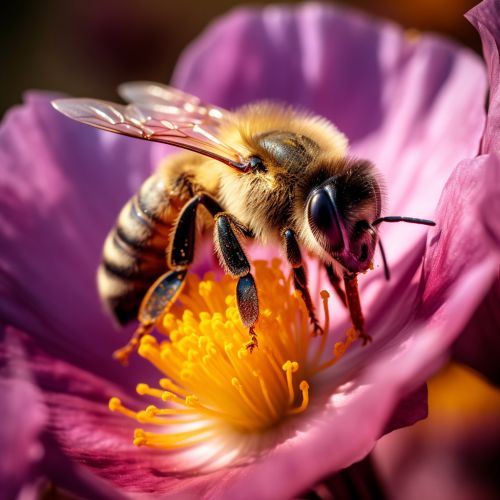Pollination Ecology in Changing Climates
Introduction
Pollination ecology is a branch of ecology that studies the interactions between pollinators and the flowers they pollinate. As the climate changes, these interactions are also affected, with potential impacts on both the pollinators and the plants they pollinate. This article will delve into the intricacies of pollination ecology in changing climates, examining the effects on various species and ecosystems, and the potential implications for biodiversity and food security.


Pollination and Climate Change
Climate change is causing shifts in temperature and precipitation patterns, which can affect the timing of flowering in plants and the activity patterns of pollinators. This can lead to a mismatch in timing between when a flower is available and when its pollinator is active, a phenomenon known as phenological mismatch. This mismatch can reduce the success of plant reproduction and the availability of food for pollinators.
Effects on Pollinators
Different pollinators are affected by climate change in different ways. For example, bees, which are the most important group of pollinators, may experience changes in their range and abundance due to changes in temperature and precipitation. Other pollinators, such as butterflies, birds, and bats, may also be affected by changes in their food sources and habitats.
Effects on Plants
Plants that rely on pollinators for reproduction can also be affected by climate change. Changes in temperature and precipitation can affect the timing of flowering and the availability of nectar and pollen, which can in turn affect the success of pollination. In addition, changes in the distribution and abundance of pollinators can also affect plant reproduction.
Implications for Biodiversity
The changes in pollination dynamics due to climate change can have significant implications for biodiversity. Changes in the distribution and abundance of pollinators can affect the distribution and abundance of plants, which can in turn affect the composition of plant communities and the animals that rely on them for food and habitat. This can lead to changes in biodiversity at multiple scales, from local to global.
Implications for Food Security
Many of the world's crops rely on pollinators for reproduction, so changes in pollination dynamics due to climate change can have significant implications for food security. Changes in the distribution and abundance of pollinators can affect crop yields, and changes in the timing of flowering can affect the availability of crops. This can have significant impacts on food availability and prices, particularly in developing countries where people are more directly dependent on local agricultural production.
Mitigation and Adaptation Strategies
There are various strategies that can be used to mitigate the effects of climate change on pollination dynamics and to help pollinators and plants adapt to changing conditions. These include conserving and restoring habitats, creating pollinator-friendly landscapes, and managing pests and diseases. In addition, research and monitoring are crucial for understanding the effects of climate change on pollination dynamics and for developing effective mitigation and adaptation strategies.
